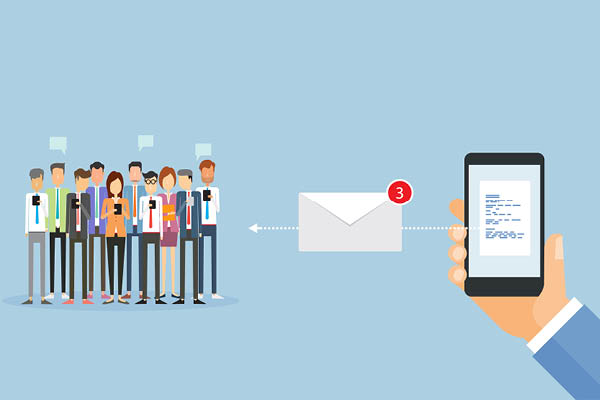10 Steps to A Successful SMS Marketing Campaign
 Short Message Service (SMS) marketing is more effective than you might have thought. Sure, this method of reaching a target audience has been abused by some organizations. After all, who hasn’t occasionally received unwanted spam text messages from advertisers? But then, the same can be said about email marketing. Even so, SMS marketing can yield dramatic results.
Short Message Service (SMS) marketing is more effective than you might have thought. Sure, this method of reaching a target audience has been abused by some organizations. After all, who hasn’t occasionally received unwanted spam text messages from advertisers? But then, the same can be said about email marketing. Even so, SMS marketing can yield dramatic results.
The first advantage that you gain with SMS is the immediacy of the medium. Most people have their phones with them 24/7. So, 90% of SMS messages get read within three minutes of receipt. The second advantage is the reach of SMS. It has been estimated that 97% of Americans own a cell phone. And even phones that are not “smart” can receive SMS messages.
So, there is plenty of evidence to suggest that SMS marketing works. But how do you go out planning and implementing an SMS marketing campaign? Here are ten steps to ensure that your next SMS campaign is a roaring success.
- Define Your Goals
As with any marketing campaign, the first step is to define your goals. And the best way to formulate plans is to use the SMART goal approach. The object of that approach is that your goals must be Specific, Measurable, Achievable, Relevant, and Time-bound. Setting targets will enable you to create focused marketing campaigns and measure the success of those campaigns.
- Set and Tick to Opt-In Rules
SMS marketing must be permission-based. So, recipients of your messages must have opted-in to your SMS channels. And it would help if you offered users an opt-out option, too.
There are various legitimate ways of building an SMS mailing list. You could ask for opt-in at checkout on an eCommerce website, for example. Or you can have subscription prompts on your website or social media profiles. Either way, a subscriber must explicitly opt-in to an SMS marketing list.
- Know Your Audience
You need to pitch an SMS marketing message in the right way for your audience. So, consider what drives a person to purchase your products. What are their concerns and pain points? And what type of people are they? When you understand who your audience is, you can write SMS messages that resonate with those individuals.
- Segment Your SMS Mailing List
If you send irrelevant SMS messages to people, you will have a high opt-out rate. So, it is best to segment your SMS subscriber list to ensure targeted messaging. You could segment subscribers based on gender, location, items purchased, for example. Or you could categorize subscribers based on questions asked at the point of subscription.
- Decide on Message Frequency
Subscribers to an SMS marketing service will have given their permission for you to text them. However, text messages from businesses can become annoying if they appear on your phone too frequently. So, you need to consider the frequency of your SMS marketing messages carefully.
Generally, it is best to consider what would typically trigger a person to think about your product. Some products would usually be purchased monthly, for example. In which case, a monthly marketing message would be appropriate. In comparison, some products will be seasonal. So, sending messages immediately before the seasonal event would be most effective.
- Get the Timing Right
The time of day you send SMS marketing messages is also crucial. For example, people at work are less likely to read a marketing message during working hours. However, sending late-night marketing messages will annoy people. So, once again, consider what days and what time of day your target audience might be more receptive to a marketing message from your business.
- Don’t Get Boring
As mentioned above, the open rate for SMS messages is far higher than it is for emails. You can assume with some certainty that your marketing messages are being read. So, there is no need to tell a subscriber about the same offer repeatedly.
There are some occasions when reminders will be appropriate. For example, you might want to remind subscribers once a month that they could save money by taking up a special offer or switching to a lower tariff. But it would be a mistake to bug someone with this information daily.
- Write Compelling Messages with Calls to Action
You will only have people’s attention for a short period. So, marketing messages sent by text must be short and sweet. And you must get to the point in the first few words. So, if your message is a special offer, start the message with what the recipient can save. And time-limit special offers to increase the sense of urgency.
It must also be clear what the recipient must do next. So, include a compelling call to action (CTA) in your marketing message. Most people own smartphones now, so your CTA could be a link to direct a user to your website.
- Be Consistent
Consistency is crucial in SMS marketing. For example, it is best to avoid sending too many messages at once, followed by none. So, create a schedule for your SMS marketing messages. And try to adopt a constant tone in the wording of all your marketing messages.
- Analyze the Outcomes
At the end of an SMS marketing campaign, analyze the outcomes and compare them to your SMART objectives. Analyzing the results will help you calculate your return on investment (ROI) and indicate where you might need to refine your approach for future campaigns.
SMS marketing can be highly productive. However, you must have a customer opt-in before you add them to your marketing list. And your marketing messages must be relevant and compelling. And remember, there is nothing worse than being woken up by a marketing message on your phone! So, it is best to avoid messaging late at night or early in the morning.






